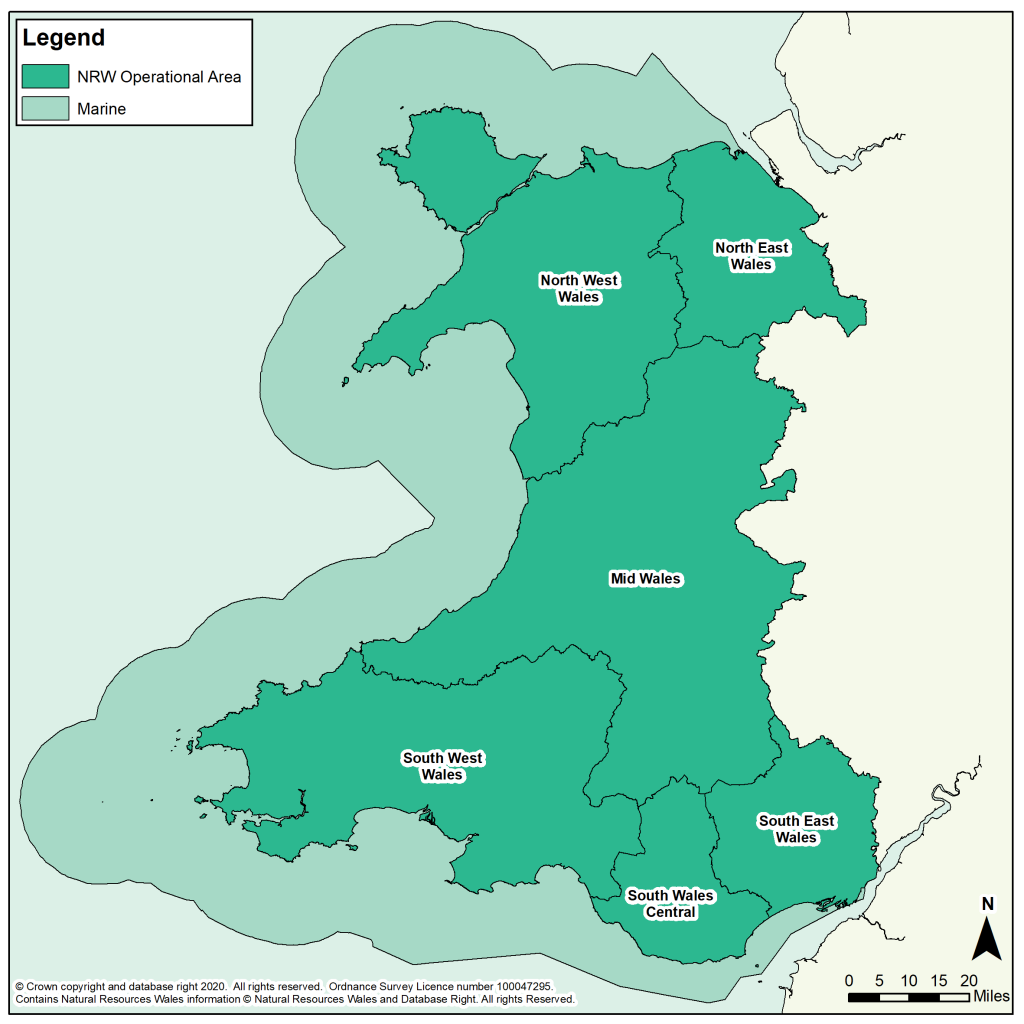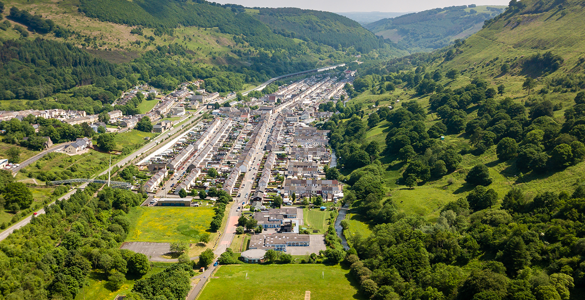Natural Resources Wales published a series of seven “innovative” ‘Area Statements’ in March.
The Area Statements are place-based natural resource reports setting out what needs to be done in each area to:
- deliver nature-based solutions to manage natural resources: and
- increase renewable energy and resource efficiency.
But can they also be used to help Wales achieve a ‘green recovery’ from the coronavirus pandemic?
Where have they come from?
Area Statements are required under the Environment (Wales) Act 2016.
The Act introduced a new policy framework to deliver the concept of ‘sustainable management of natural resources’ (SMNR): using natural resources in a way that maintains and enhances the resilience of ecosystems, and the benefits they provide.
The framework aims to embed SMNR as a core consideration in Welsh public authorities’ decision-making. The different aspects of the SMNR policy framework are:
- Area Statements - prepared by NRW and other public authorities;
- the State of Natural Resources Report (SoNaRR) - an assessment of the current condition and extent of natural resources in Wales, and an evaluation of their ability to respond to pressures such as climate change - prepared by NRW annually; and
- the Welsh Government’s Natural Resources Policy (NRP).
The Act requires each Area Statement to contain references to:
- the natural resources in the area;
- the benefits which the natural resources provide; and
- the priorities, risks and opportunities for SMNR, which need to be addressed.
The statements must also reflect the other key documents in the policy framework, by considering the content of SoNaRR and setting out a place-based approach to delivering the priorities in the NRP.
What are they?
The Area Statements follow NRW’s six operational areas, shown on the map below. They are North East, North West, Mid, South East, South Central and South West Wales. There is also an Area Statement for the marine area.
 Figure 1 – NRW operational areas [source: Wales Environmental Information portal]
Figure 1 – NRW operational areas [source: Wales Environmental Information portal]
NRW says that “each area statement outlines the key challenges facing that particular locality” and identifies themes relevant to that area.
For example, the South Central area is the most densely inhabited, and as a result its statement “is dominated by a desire to bridge the urban and the natural environments” and includes themes covering air quality and health.
Conversely, small rural agricultural communities are typical of the Mid Wales area, where forestry forms an important part of the economy. The landscape is shaped by rivers and there are a number of large reservoirs for water supply. This statement is more focused on sustainable land, water and air and forest resources.
The marine Area Statement covers the whole of Wales’ inshore waters (out to 12 nautical miles), which make up 43% of the Welsh marine territory. A key theme is making the most of marine planning, and the Area Statement is designed to complement the Welsh National Marine Plan.
Further sector specific information explains how Area Statements are relevant to certain sectors across Wales. NRW says this information is being “continuously updated”, and currently contains information for the water, energy and waste sectors.
NRW has also identified ‘opportunity catchments’ “aimed at improving the management of water body catchments and increasing the well-being to people”, as part of River Basin Planning. Maps of these areas are expected to be published within the draft third cycle River Basin Management Plan (RBMP) consultation later this year.
What do they do?
Each Area Statement aims to progress certain activities or actions, from NRW and/or other identified public bodies, to achieve SMNR:
These actions and activities may lead to the development of partnership projects and initiatives, changes in our processes and evidence-base, or the issue of guidance and advice that informs other plans and decision-making.
Next steps are set out for each theme identified in the Area Statements, and they vary significantly. Many of the next steps are focused on building on the work already done to create the statements, including continuing the conversation with existing stakeholders, and engaging with a wider variety of new stakeholders.
Other themes’ next steps are more detailed, for example the climate ready Gwent theme explores how to “work better together to act on the causes and adapt to the consequences of climate change”. The next steps/actions are listed as “adaption outcomes” such as increasing the use of green infrastructure, and ”mitigation outcomes” such as creating opportunities for citizens to challenge and scrutinise progress on actions.
NRW says that it’s “conceivable” that Area Statements will become “more instructive” as they evolve. There is no statutory timeframe, but the Environment Act states that NRW ‘must keep area statements under review and it may revise them at any time’. However the process and governance of a review and/or revision has “yet to be confirmed”.
What role do they have in a green recovery?
The Area Statements were published just as the coronavirus pandemic reached the UK.
Environmental groups are campaigning for a green recovery, saying that responding to the pandemic presents an opportunity for governments to do things differently. For example, an “overwhelming majority” of Climate Assembly UK members support measures that encourage a green economic recovery from the pandemic.
Research from Ipsos Mori suggests that 66% of people in Great Britain agree that, in the long term, climate change is as serious a crisis as Covid-19. 58% agree that it’s important governments prioritise climate change in the economic recovery after Covid-19.
In a 17 June 2020 Cabinet Statement, Jeremy Miles MS, Counsel General and Minister for European Transition said:
In responding to the fall-out from Covid 19, we need to hold our nerve and deliver the “green” recovery that will sustain Wales into the future.
However, others argue that the focus of the economic recovery from Covid-19 should be on people and their skills, given reliance on them as highlighted throughout the pandemic.
The same Ipsos Mori research suggests that opinion is split on whether government should focus on helping the economy to recover first and foremost, even if that means taking some actions that are bad for the environment, with 46% of people in Great Britain agreeing and 43% disagreeing.
Environmental NGOs discussed opportunities for a green/blue recovery with the Senedd’s Climate Change, Environment and Rural Affairs (CCERA) Committee in June, calling for provision within the planning system for no net-loss of nature in any development, “so we're starting to invest in the most important things to restore the natural world”.
The Welsh Government’s draft National Development Framework says that priority areas identified in Area Statements are a material planning consideration and they should be reflected in the policies of development plans.
Jeremy Miles MS said in a 14 July Cabinet Statement that in the wake of the coronavirus pandemic, the Welsh Government will “push forward with [its] response to the climate emergency” and “must move beyond business as usual and focus on change”.
Article by Lorna Scurlock, Senedd Research, Welsh Parliament






